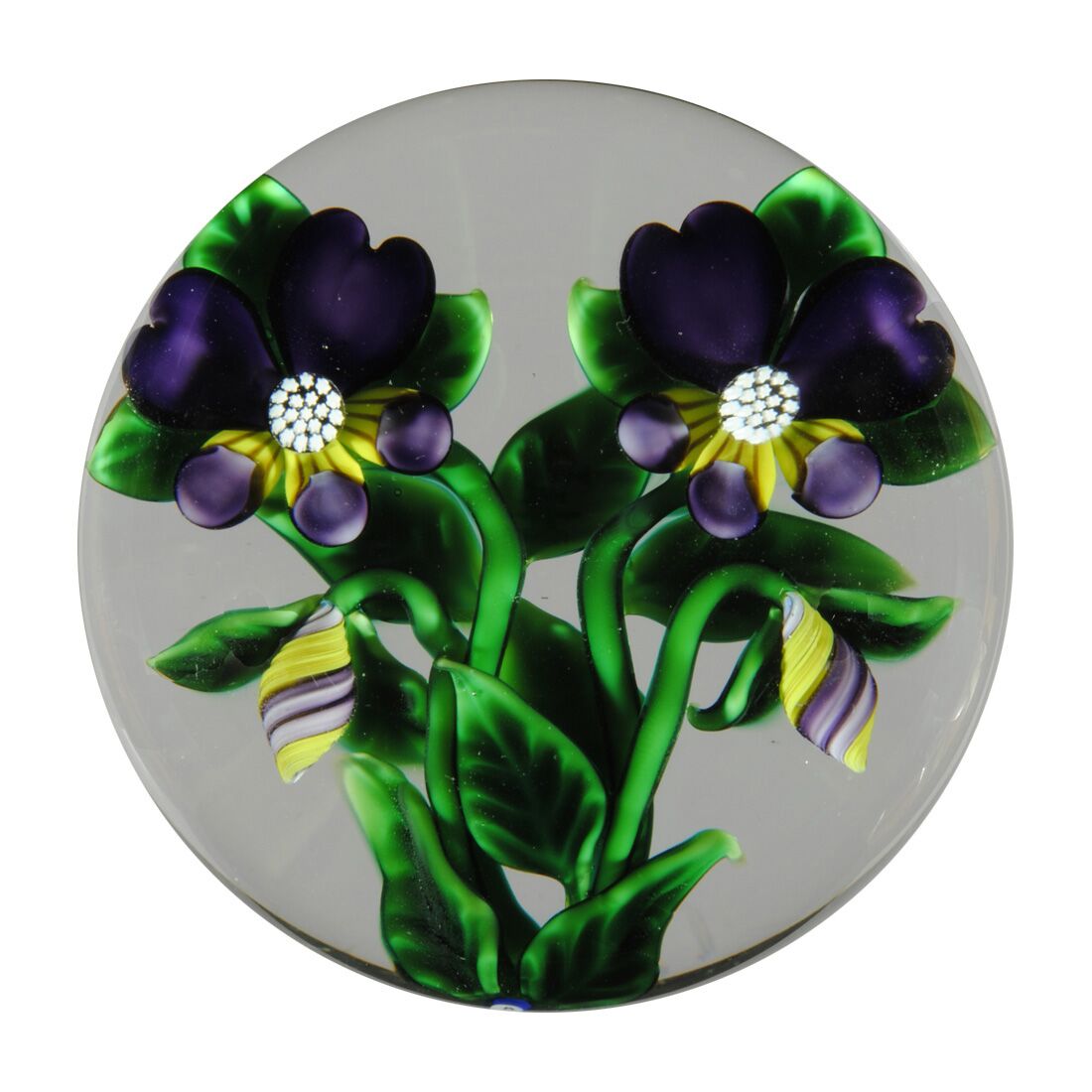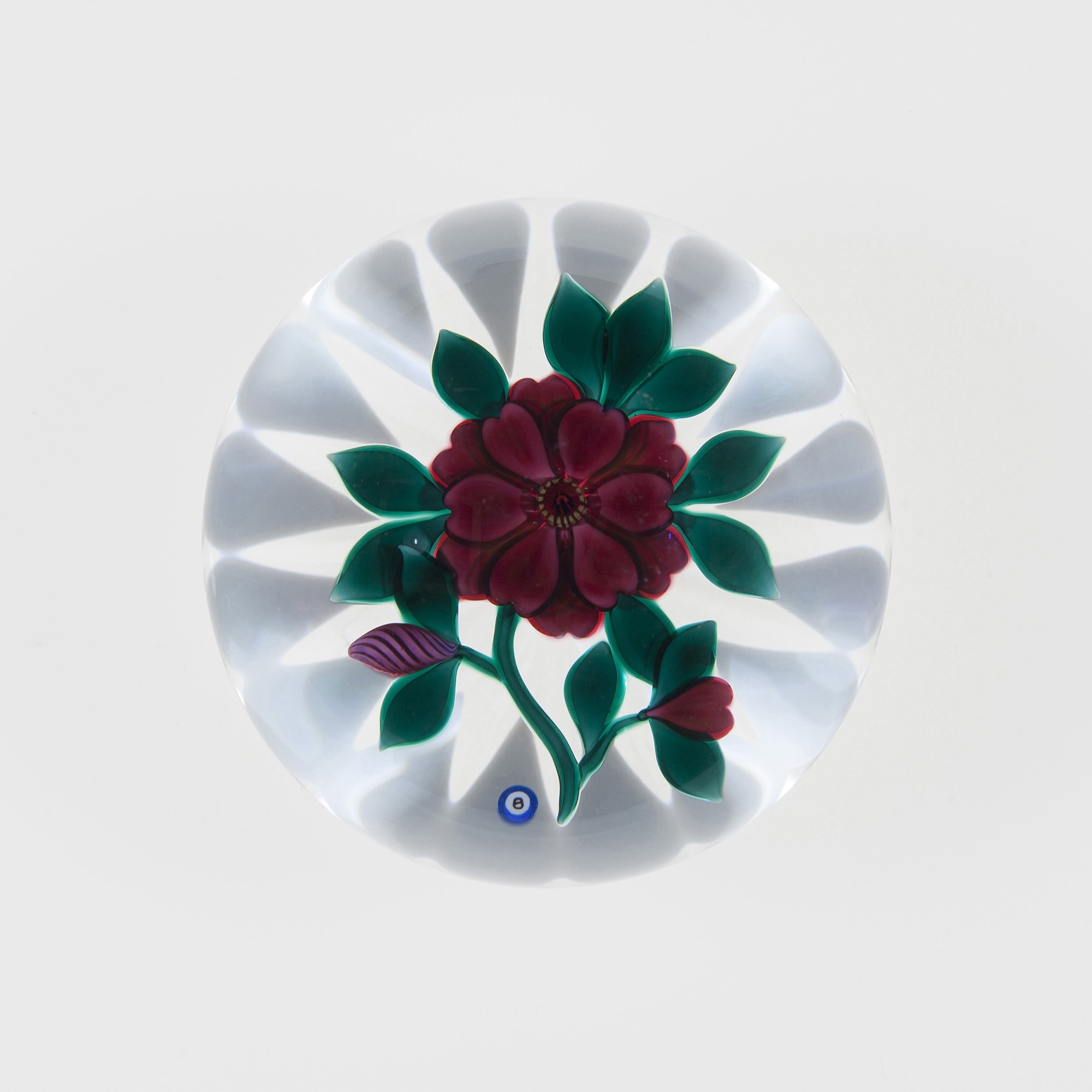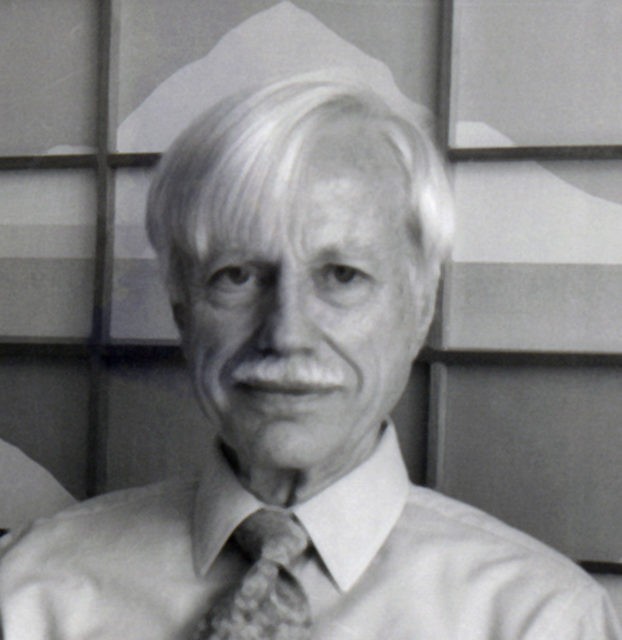
Image courtesy of Bob Banford.
Bob Banford
American paperweight artist Robert “Bob” Banford (1951– ), together with his father, Raymond Banford (1918–2003), developed a mutual interest in paperweights while Bob was a teenager. Bob received a torch as a high school graduation present from his father in 1971 and apprenticed for a year as a scientific glassblower while teaching himself how to make paperweights. After the Banfords produced their first saleable weights in 1973, they formed R. Banford, Inc. in their native New Jersey, where they made and sold their own paperweights and art glass, in addition to antique paperweights. Banford retired from weight making in 2006 and resides in the Florida Keys.
Works

Two Pansy Bouquet with Crimped Green Leaves, 1996. Glass paperweight. Image courtesy of Bob Banford.

Upright Bouquet, 1985. Glass paperweight. Diam: 2.875 in. Image courtesy of the Art Institute of Chicago. Bequest of Arthur Rubloff (1988.541.845).

Red Flower, 1980. Glass paperweight. Diam: 2.938 in. Image courtesy of the Art Institute of Chicago. Bequest of Arthur Rubloff. (1988.541.846).

Bob Banford discusses how he and Victor Trabucco got Schott Optical to make glass for them.
0:31Bob Banford talks about the sources for obtaining colored glass that was compatible with crystal.
0:21Bob Banford discusses small studio glass makers in South Jersey before the studio glass movement.
0:35 TranscriptBob Banford discusses the Paperweight Collectors Weekend and its history and making paperweights with his father, Ray.
03:48 Transcript
Paul Hollister converses with Bob Banford about his and his father, Ray’s, work at a 1977 Habatat Galleries paperweight exhibition.
1:55 Transcript